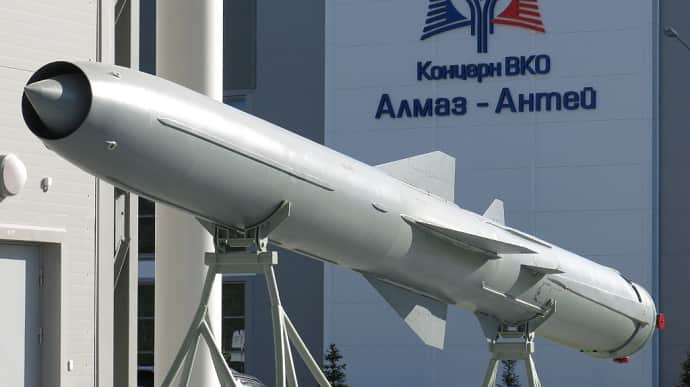Electric Planes Offer the Promise of a Better, Cooler World
The apocalyptic news cycle of the past month yielded few bright spots. While war and genocide have rightly dominated the headlines, the climate news too has been dark, with huge wind projects in the United States falling through, most retcently in Cape Cod and New Jersey. But one development stood out, reminding us that the future could be better, more inventive, and even beautiful. Electric planes, The New York Times recently reported, in a full-page feature accompanied by photos of delightfully strange-looking small aircraft, are going to happen, and, at least for short journeys, might be only a few years away from commercial viability.Not long ago, electric planes were ridiculed as completely impractical. Last year, Marjorie Taylor Greene imaginatively speculated that they would need to be powered by slave labor in a spin class (she really did say that). More objective sources than Greene, like The Wall Street Journal and The Washington Post, had identified numerous technical obstacles.The news that we could soon fly electric is exciting for the eventual carbon impact alone. Conventional aviation, in 2022, emitted almost 800 million tons of carbon—about 2 percent of total global energy-related emissions—according to the International Energy Agency, which has called it “one of the most challenging sectors to decarbonize.”Not only could electric planes help avert all that pollution, but they’re also a reminder that human civilization is still inventing beautiful new things that can make our lives better.Throughout the nineteenth and twentieth centuries, invention was celebrated, from the light bulb to the motor car to the microwave. World’s fairs, serving as a kind of Olympics of innovation, hailed the Eiffel Tower, the X-ray machine, and the Imax movie, as well as now-everyday domestic appliances like the washing machine. Invention even percolated through our imaginative lives. In my own childhood, entirely fictional machines powered the stories of Ian Fleming, from the car that shape-shifts into a boat and a plane in Chitty Chitty Bang Bang (Fleming’s 1964 novel for children, which became a hit 1968 movie) to James Bond’s numerous gadgets; from a cigarette that could shoot a rocket-powered projectile to a parking meter releasing tear gas, to weaponry concealed in wristwatches and hats.Now tech bros still wax optimistic about artificial intelligence and crypto, but many of us don’t feel it. Those who worry about the climate crisis and don’t own Tesla stock (most people) feel a lot less cheerful about human cleverness and the capacity of the future to deliver a better life. These planes invite us to dream about progress again. And they’re weird-looking in a beautiful way—a reminder, as Bill McKibben has been arguing for years, that the climate crisis demands some change to our aesthetic.Many climate activists and environmentally conscious global citizens eschew—or minimize—plane travel because of the carbon impact. Aviation is also a righteous target for left critics of the environmental toll of consumerism, since the vast majority of flights are taken by society’s richest people, and climate activists have for this reason singled out the private jet for special ire (through both direct action and social media accounts dedicated to shaming celebrities like Taylor Swift who seem to use private aviation as casually as you or I might hail an Uber).Greta Thunberg famously doesn’t fly, and she’s not alone; last month a German scholar announced that he had lost his think tank job because he refused, on climate grounds, to fly all the way home from a research visit to Papua, New Guinea, instead planning a series of trains, buses, cars, ferries, taxis, and a couple shorter flights, which would have resulted in a journey of 35 days.Abstention from flight is of course admirably principled. Yet there is something grim and unpalatable about the insistence that saving the planet means giving up everything we enjoy. It is one thing to argue, as some “de-growth” advocates do, that we’d be happier in a less polluting, postcapitalist future: working fewer hours a day with less stress and precarity. It is true that our current cycle of endless work and wasteful acquisition of stuff, punctuated by the occasional carbon-intensive vacation, isn’t fulfilling. These arguments about how much pleasure would ensue from a less alienated relationship to nature deserve more prominence.But giving up flying hits differently. Perhaps the flight addicts of the one percent deserve some mockery, especially those who take planes when there are plenty of other transport options (obviously, don’t fly to Paris from London for the weekend). Yet aviation allows us to keep up relationships with people we love who live far away and to have adventures in places we could otherwise never reach. Flying helps us remain citizens of the world; it nourishes solidarity with people in other places and opens our eyes to natural beauty that, once we have seen,

The apocalyptic news cycle of the past month yielded few bright spots. While war and genocide have rightly dominated the headlines, the climate news too has been dark, with huge wind projects in the United States falling through, most retcently in Cape Cod and New Jersey. But one development stood out, reminding us that the future could be better, more inventive, and even beautiful. Electric planes, The New York Times recently reported, in a full-page feature accompanied by photos of delightfully strange-looking small aircraft, are going to happen, and, at least for short journeys, might be only a few years away from commercial viability.
Not long ago, electric planes were ridiculed as completely impractical. Last year, Marjorie Taylor Greene imaginatively speculated that they would need to be powered by slave labor in a spin class (she really did say that). More objective sources than Greene, like The Wall Street Journal and The Washington Post, had identified numerous technical obstacles.
The news that we could soon fly electric is exciting for the eventual carbon impact alone. Conventional aviation, in 2022, emitted almost 800 million tons of carbon—about 2 percent of total global energy-related emissions—according to the International Energy Agency, which has called it “one of the most challenging sectors to decarbonize.”
Not only could electric planes help avert all that pollution, but they’re also a reminder that human civilization is still inventing beautiful new things that can make our lives better.
Throughout the nineteenth and twentieth centuries, invention was celebrated, from the light bulb to the motor car to the microwave. World’s fairs, serving as a kind of Olympics of innovation, hailed the Eiffel Tower, the X-ray machine, and the Imax movie, as well as now-everyday domestic appliances like the washing machine. Invention even percolated through our imaginative lives. In my own childhood, entirely fictional machines powered the stories of Ian Fleming, from the car that shape-shifts into a boat and a plane in Chitty Chitty Bang Bang (Fleming’s 1964 novel for children, which became a hit 1968 movie) to James Bond’s numerous gadgets; from a cigarette that could shoot a rocket-powered projectile to a parking meter releasing tear gas, to weaponry concealed in wristwatches and hats.
Now tech bros still wax optimistic about artificial intelligence and crypto, but many of us don’t feel it. Those who worry about the climate crisis and don’t own Tesla stock (most people) feel a lot less cheerful about human cleverness and the capacity of the future to deliver a better life. These planes invite us to dream about progress again. And they’re weird-looking in a beautiful way—a reminder, as Bill McKibben has been arguing for years, that the climate crisis demands some change to our aesthetic.
Many climate activists and environmentally conscious global citizens eschew—or minimize—plane travel because of the carbon impact. Aviation is also a righteous target for left critics of the environmental toll of consumerism, since the vast majority of flights are taken by society’s richest people, and climate activists have for this reason singled out the private jet for special ire (through both direct action and social media accounts dedicated to shaming celebrities like Taylor Swift who seem to use private aviation as casually as you or I might hail an Uber).
Greta Thunberg famously doesn’t fly, and she’s not alone; last month a German scholar announced that he had lost his think tank job because he refused, on climate grounds, to fly all the way home from a research visit to Papua, New Guinea, instead planning a series of trains, buses, cars, ferries, taxis, and a couple shorter flights, which would have resulted in a journey of 35 days.
Abstention from flight is of course admirably principled. Yet there is something grim and unpalatable about the insistence that saving the planet means giving up everything we enjoy. It is one thing to argue, as some “de-growth” advocates do, that we’d be happier in a less polluting, postcapitalist future: working fewer hours a day with less stress and precarity. It is true that our current cycle of endless work and wasteful acquisition of stuff, punctuated by the occasional carbon-intensive vacation, isn’t fulfilling. These arguments about how much pleasure would ensue from a less alienated relationship to nature deserve more prominence.
But giving up flying hits differently. Perhaps the flight addicts of the one percent deserve some mockery, especially those who take planes when there are plenty of other transport options (obviously, don’t fly to Paris from London for the weekend). Yet aviation allows us to keep up relationships with people we love who live far away and to have adventures in places we could otherwise never reach. Flying helps us remain citizens of the world; it nourishes solidarity with people in other places and opens our eyes to natural beauty that, once we have seen, we feel more deeply committed to saving. The electric planes invite us to hope for a future in which we can still do all that in good conscience.
Even better, they evoke that twentieth-century feeling of excitement for the ingenious future. That feeling that there was a future. To save the world, we need that.



